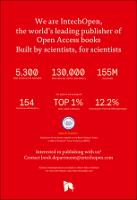Chapter Product Life Cycle Risk Management
Author(s)
Tupa, Jiri
Steiner, Frantisek
Machac, Jan
Language
EnglishAbstract
Every new product coming to the market usually brings with a certain amount of doubt concerning the likelihood of its success. In particular, hidden problems and risks which might appear later in the product’s service life could cause producers’ difficulties, costing them a lot of money. This might even result in product phaseout and a consequent loss of the company’s reputation. Hence, it is necessary to manage all product risks. Unfortunately, no comprehensive methodology, managing the entire product life cycle, has been developed so far. This paper presents a new risk management methodology that covers the entire product life cycle. The product life cycle and its management have become a present standard and an important element of the information structure of modern enterprises. A product life cycle comprises several phases; this helps make risk management easier because it is feasible to manage risk for each phase separately. Generally, this phase structure creates a closed and unceasing rotation of risk management tasks and is an important element in universal process improvement. The methodology is focused on prioritizing risks according to the customer’s needs and requirements. It can be applied to a large number of different products and industries.
Keywords
risk management, product life cycle, risk analysis, product riskDOI
10.5772/intechopen.68797Publisher
InTechOpenPublisher website
https://www.intechopen.com/Publication date and place
2018Classification
Building construction and materials


 Download
Download